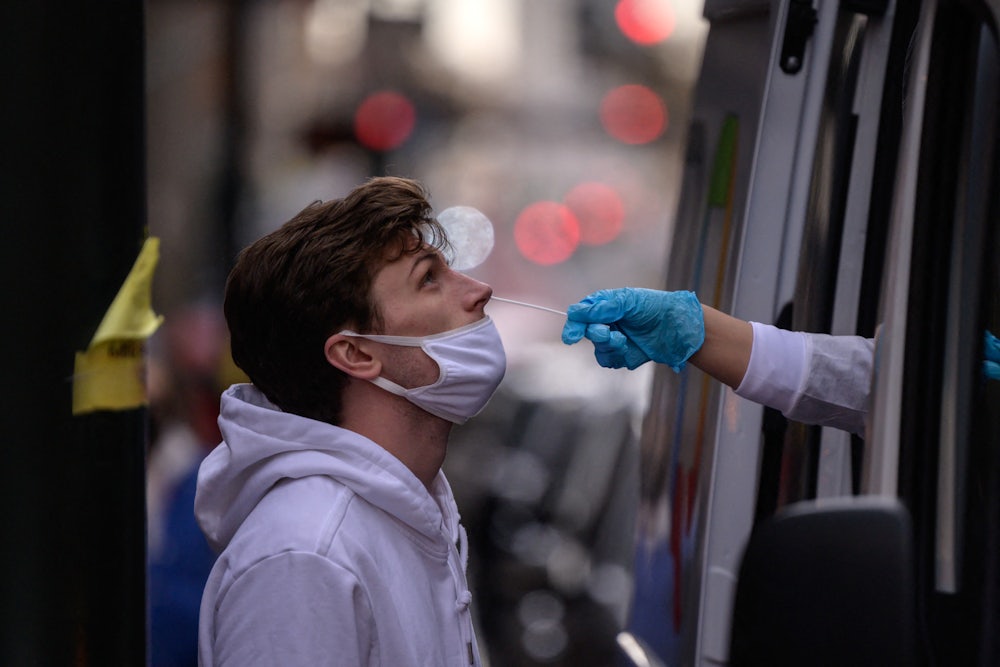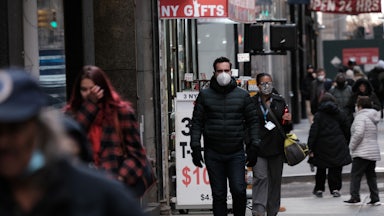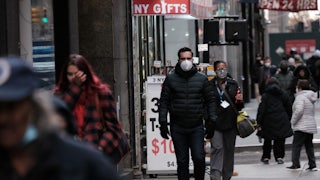A chorus of pandemic minimizers, from pundits to armchair experts, have declared the pandemic is in its end game. This isn’t new; some self-styled experts have made a reputation of trying, and failing, to predict when the pandemic will end. Simply declaring that we’re tired of the virus hasn’t worked; nor has bingeing Tiger King.
But there is one metric that will signal a new, more hopeful era of the pandemic: widely available and effective early treatments. Along with vaccinating the world, globally available treatments will mark a major milestone to conquering Covid-19.
Since we haven’t been able to agree on nonpharmaceutical precautions to stop the spread, having treatments to keep Covid from progressing will be an important development, helping to close the gap in the protections offered by vaccination—for older or immune-compromised individuals, for those not yet vaccinated, or as new variants and more severe breakthrough cases emerge.
Several promising treatments have recently been authorized by the Food and Drug Administration. Pfizer began work on what would become Paxlovid during the first SARS outbreak two decades ago; the drug now seems to be about 90 percent effective at preventing severe Covid among those at high risk. Molnupiravir, an antiviral first developed to treat the flu, is only 30 percent effective—but it can be helpful for those who can’t take Paxlovid. They join existing early treatments like remdesivir, an antiviral repurposed to help hospitalized patients that also seems very promising as an early treatment, as well as monoclonal antibodies, one of which is still effective against omicron.
“If I had Paxlovid in my medicine cabinet, I would feel really confident,” Dr. Eric Topol, professor of molecular medicine at Scripps Research, told me. Having the medication quickly prescribed for anyone who has tested positive and is at risk would work wonders, he said. “If everybody had that pill that they can take for five days at the beginning of symptoms and confirmation, so they wouldn’t have to worry—they have another 90 percent protection from being hospitalized, on top of the vaccine and booster. Then we get into a different state. Then we get into the confidence state.”
“But we aren’t there,” Topol added. “We should have been there, if we had enough pills to give everybody. But we are so far away.” Topol currently thinks that developing and deploying a full tool kit for addressing Covid-19, allowing us to treat it as any other serious respiratory infection, is still over a year away.
It takes months to manufacture the currently available treatments. Several other treatment options need to be developed, as well—a process that can take months or years—for those who aren’t able to take Paxlovid or infusions of monoclonal antibodies, for instance. And one of the most important steps of all has nothing to do with meds: Quick, accurate testing needs to be become a permanent fixture in the medical landscape. The new treatments need to be taken in a short window after a person contracts Covid-19—something doctors can only identify with widespread testing. Testing will also be vital to slowing the development of antiviral resistance; if everyone were to take these medications all the time, even when they’re not needed, the medications could soon become less effective.
The reason treatments are “crucial,” Dr. Namandjé Bumpus, director of pharmacology and molecular sciences at Johns Hopkins University School of Medicine, told me, is that they can reduce severe Covid, which in turn keeps hospitals from being overrun and people from dying. “It certainly helps us move to the next phase.”
But to receive treatment, you need to know you have Covid in the first place. First, you need to recognize the symptoms. “People still are not necessarily recognizing symptoms of Covid early,” Bumpus said. Then you need a positive test, and tests can be hard to find. It can take days to get appointments, especially at the height of surges, and days more to get results—which wastes valuable time that could be used for starting the course of medications. We need to ramp up testing availability and also increase speed of results, she said. It’s the same process we’ve had with the flu in recent years: Prescribing the antiviral Tamiflu became much easier once doctors had better rapid diagnostic tests for influenza.
“It needs to be where you literally have one-stop shopping,” Dr. Céline Gounder, an infectious diseases specialist and epidemiologist at New York University and Bellevue Hospital, told me. “You walk in, you get a rapid test, you get your result, you get the drugs.” You would receive counseling on drug interactions. (The list of drugs that don’t work with Paxlovid, for instance, is long and complicated.) “And then the person can walk away with the meds free of charge, no co-pays; if they don’t have insurance, they don’t pay for it. The problem is, our health system is not really set up for that,” Gounder said. There are conversations in the works about delivering the treatments within 24 hours, but “that has not been figured out yet.”
Educating the public will also be important. “Pursuing the treatment really depends on you having an understanding even that you’re at risk for severe Covid or hospitalization,” Bumpus said. “Everyone is not fully aware of their potential risk.” You can’t simply wait until you’re truly sick to seek out the new medications, because the effectiveness drops the longer the illness lasts. And everyone should know that taking the medications doesn’t mean symptoms will magically improve; it means they are less likely to worsen to the point of hospitalization or death.
So far, the early medications for Covid-19 have only been tested among high-risk individuals. It’s not clear yet how effective they’ll be at preventing severe illness in people who are less likely to get very sick—but having them on hand could help. “We’ve seen the use of many medicines evolve from treatment to being able to use for prevention as well, but I think it will take time and take more understanding and more broad use to determine whether this treatment or future treatments for Covid-19 can be used that way,” Bumpus said.
Right now, both the antivirals and the monoclonal antibody treatment that works against omicron are in extremely short supply, and they are reserved for those at highest risk. Scaling up production will take months, so it will be some time before everyone has access to the medications. That’s not to mention the time it will take to develop alternative treatments for those for whom these early medications are contraindicated: Paxlovid, for instance, shouldn’t be taken by those with certain liver or kidney issues or by those who are on medications that could mix dangerously with the antiviral.
And with any widely used medication, antiviral resistance is always a possibility. There has been one documented case of remdesivir resistance in the lab, and there have also been reports of resistance to monoclonal antibodies. But the more medication options there are, the less likely we are to develop resistance to a certain drug—and developing cocktails of several drugs can help treatments “hit the virus at different points” to keep resistance at bay, Bumpus said.
Vaccination is still the best way to slow all of this. Global vaccine equity would not just prevent deaths worldwide but would also help prevent the emergence of new variants that could more easily escape the treatments. “Relying on the treatment completely—it’s not going to reach everyone, and it’s not going reach everyone at the right time,” Bumpus said. “It’s an important part of the tool kit, but I just hope that we don’t get to a place where we have many people who are at high risk relying on this.”
Despite these caveats, having effective early treatments on the horizon is a welcome sign of moving into a less dire phase of the pandemic. Only once we are able to protect everyone, first with vaccines and then with treatments and other precautions, will we know that the pandemic has reached its end game.










